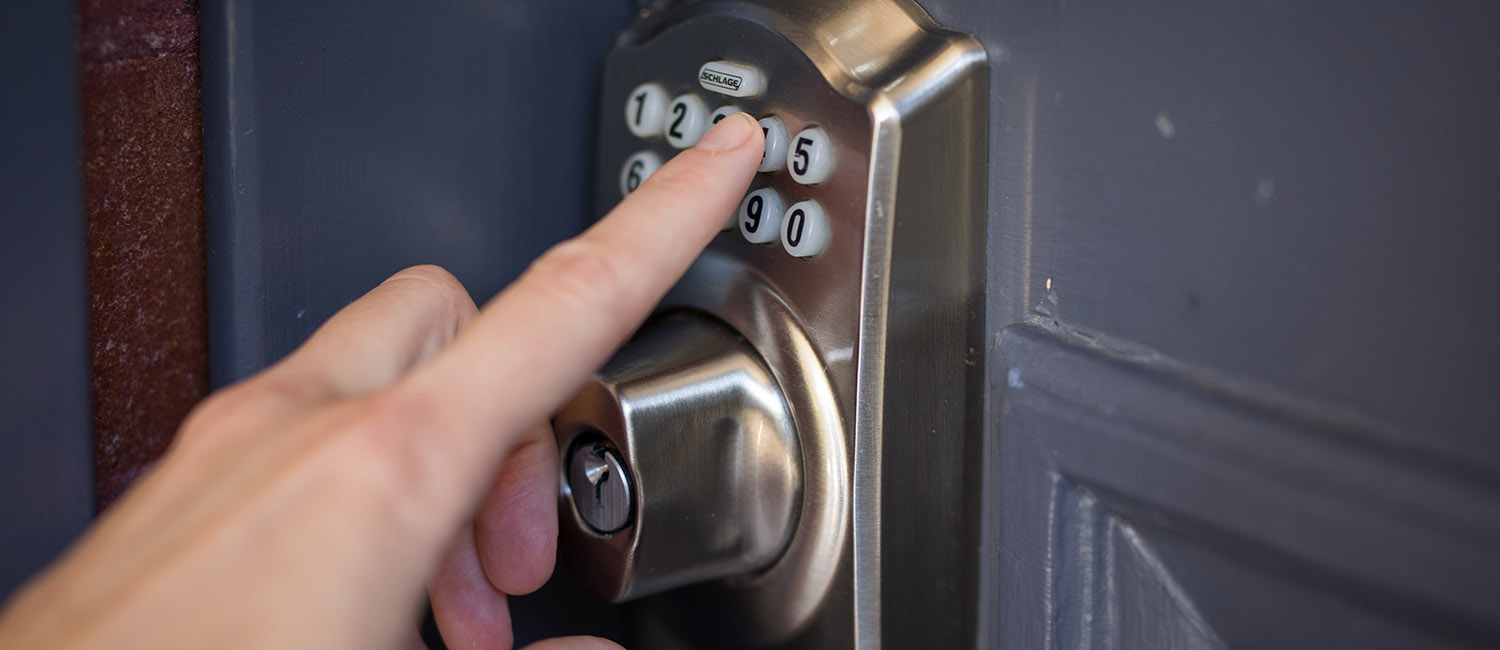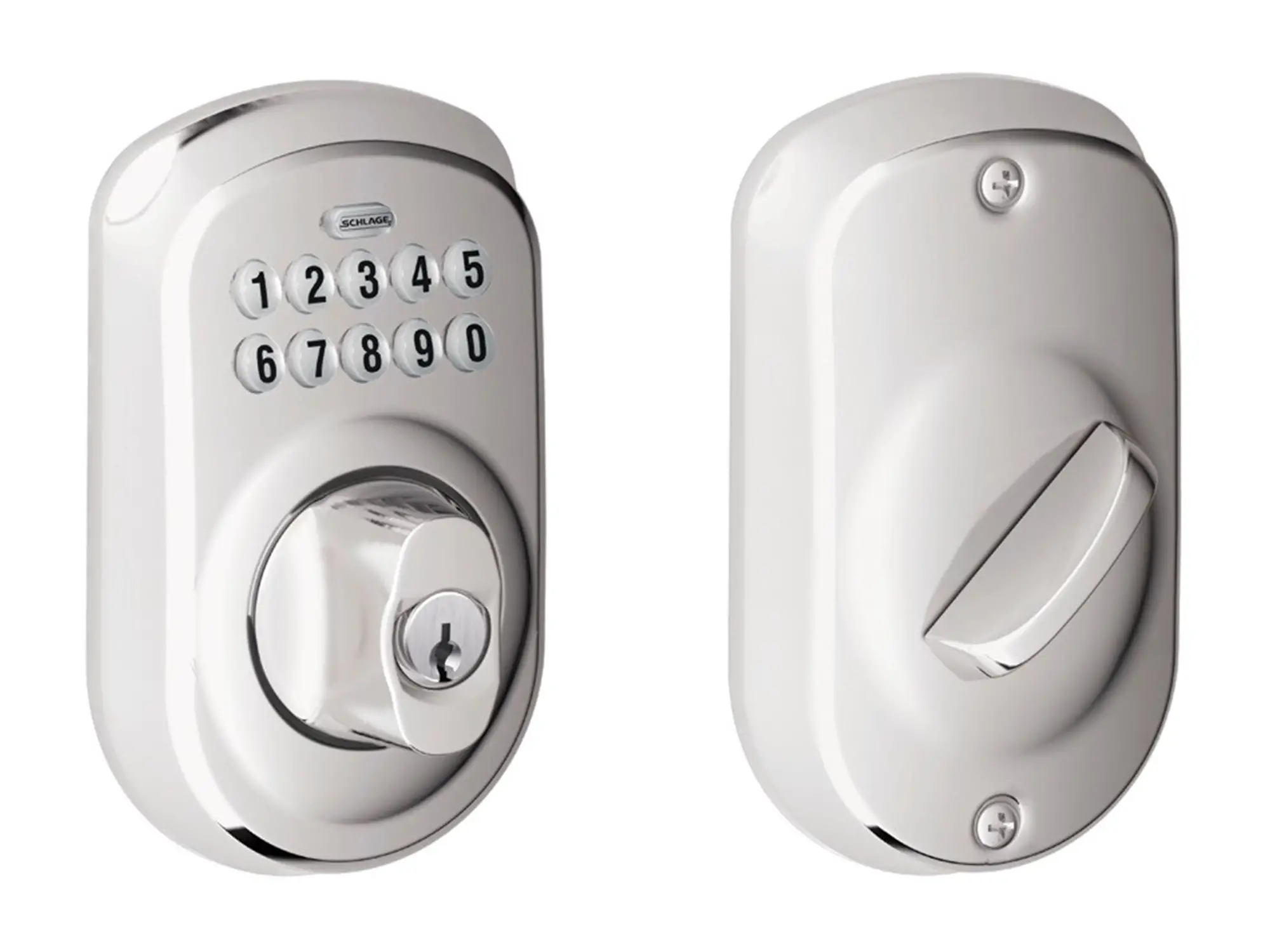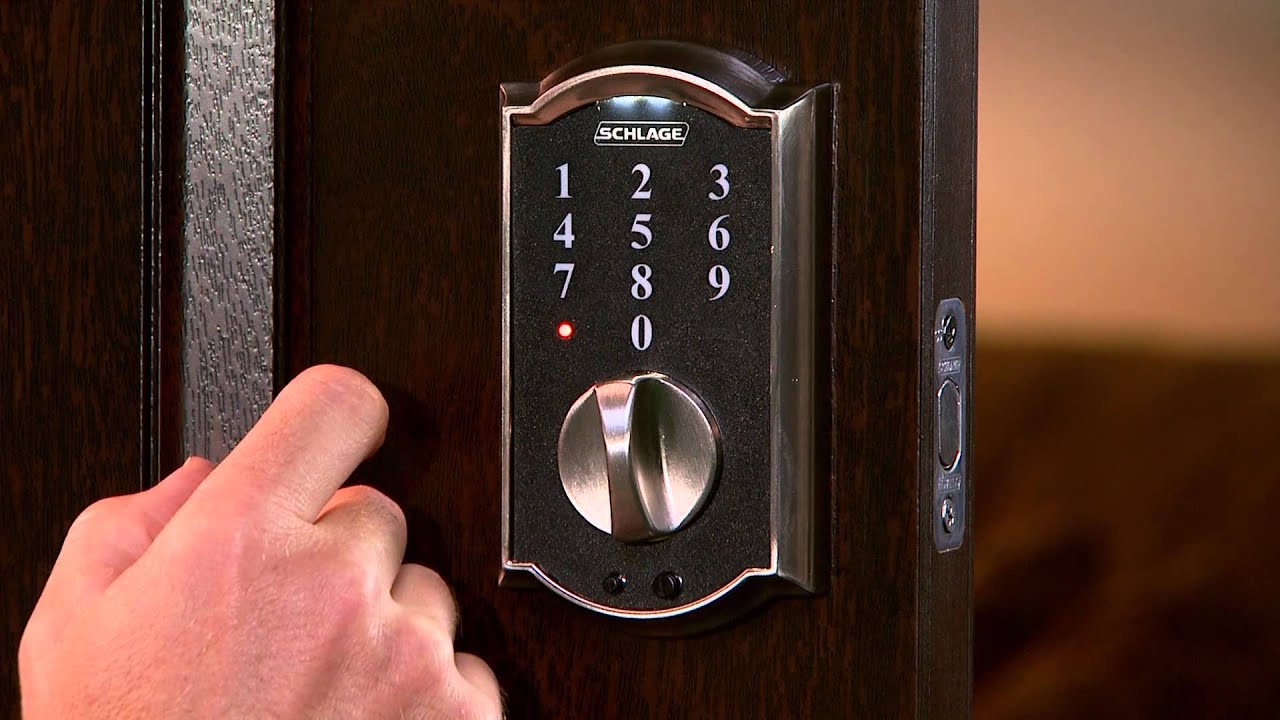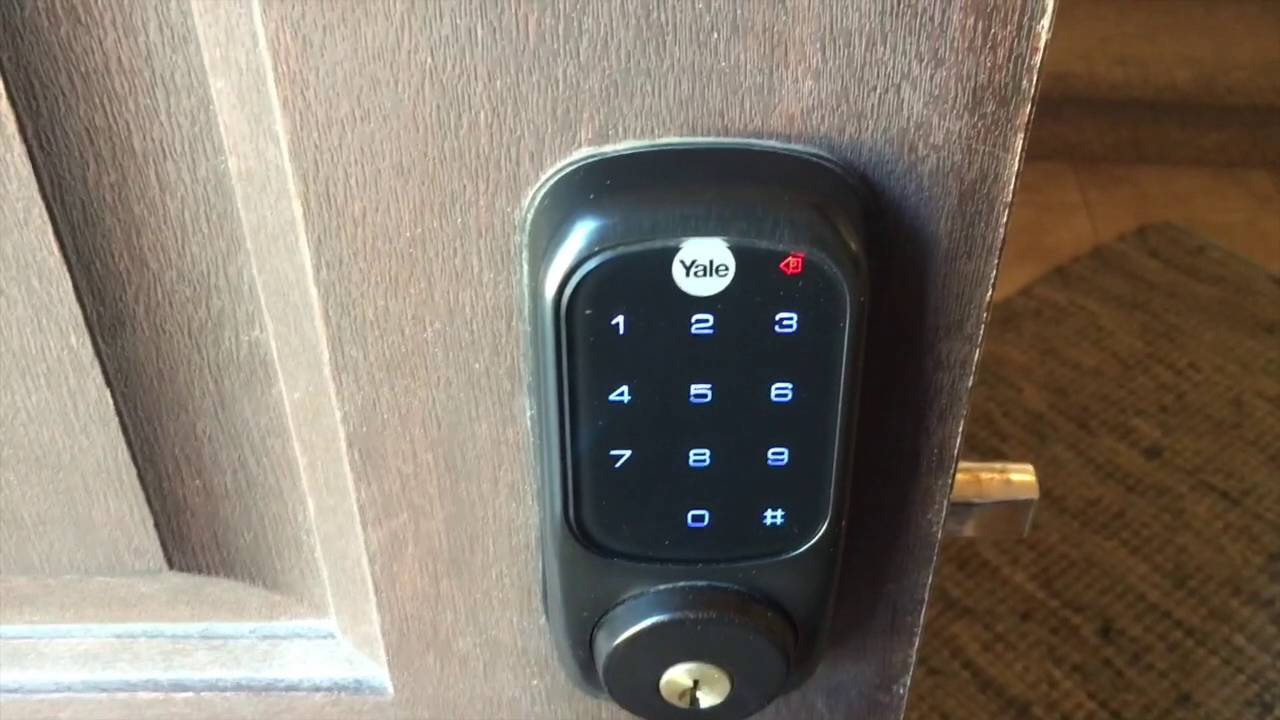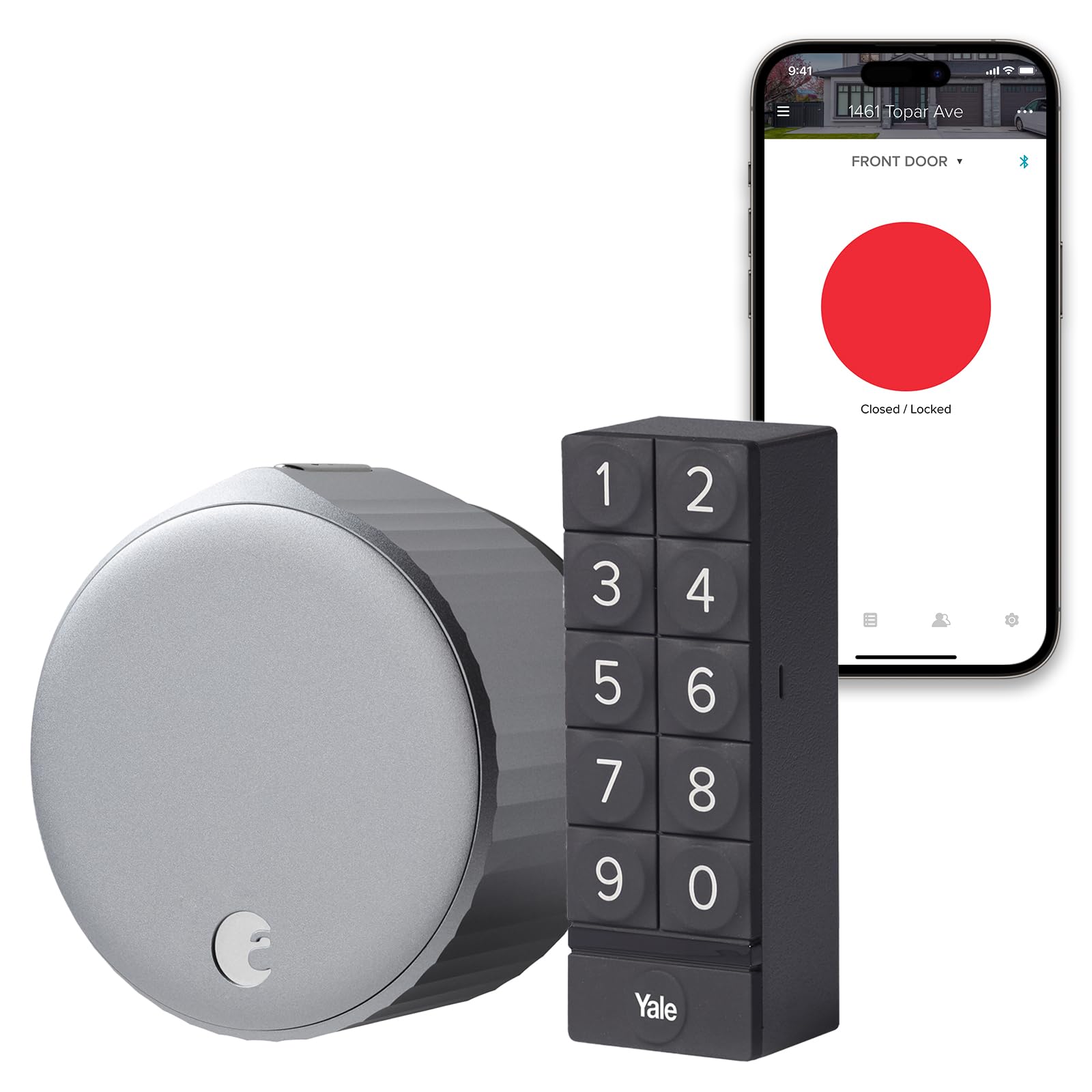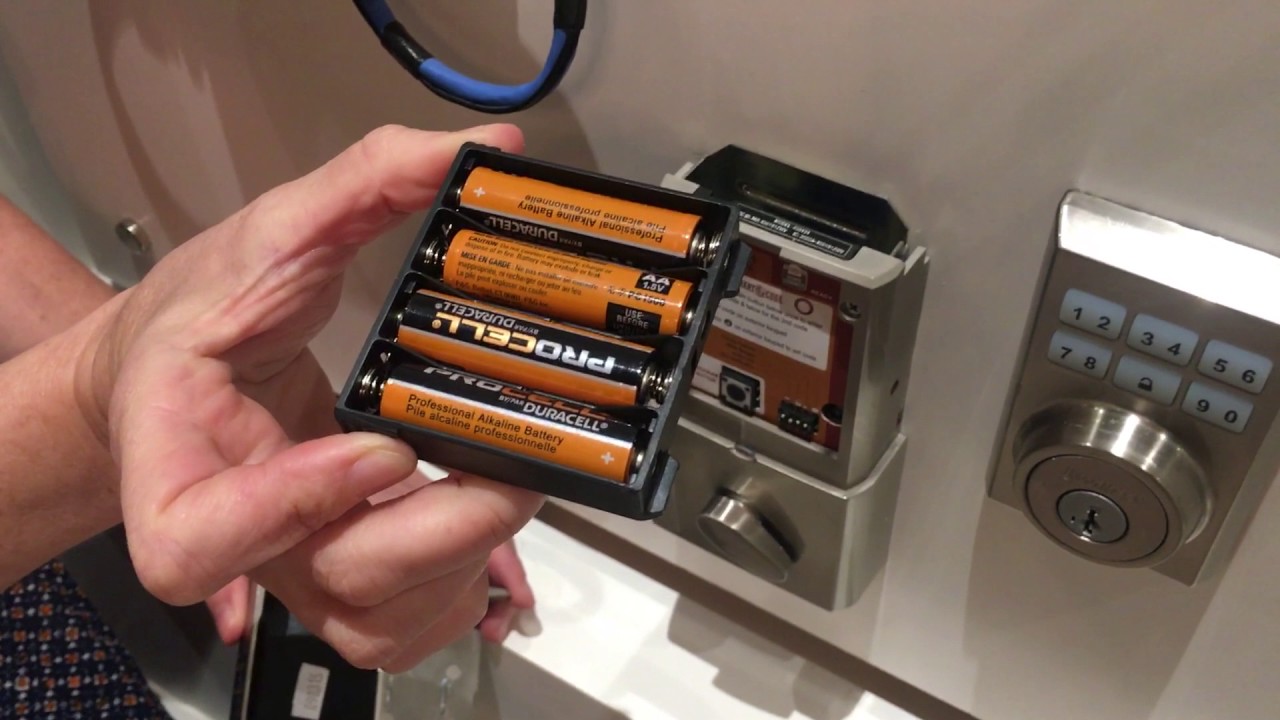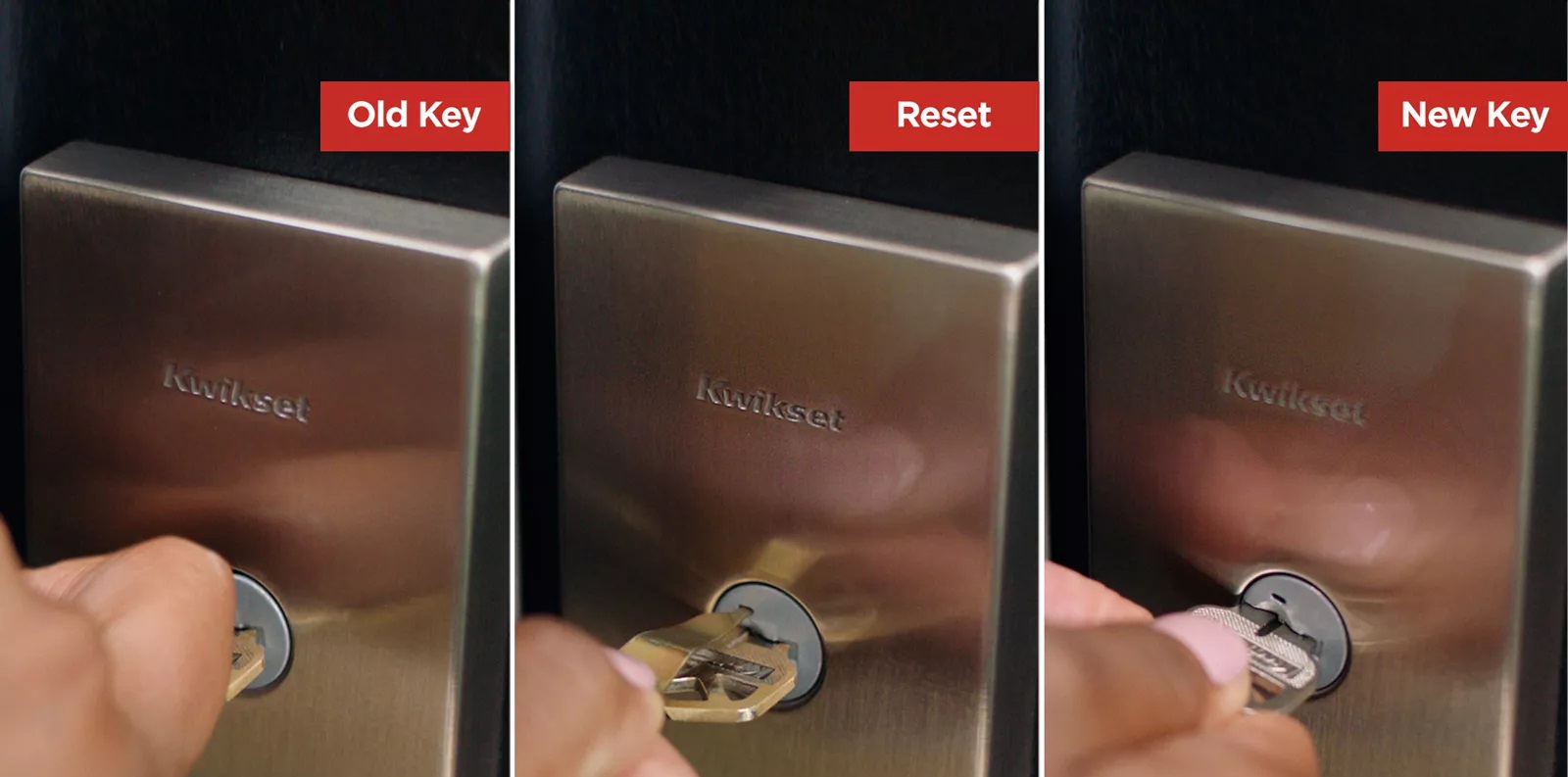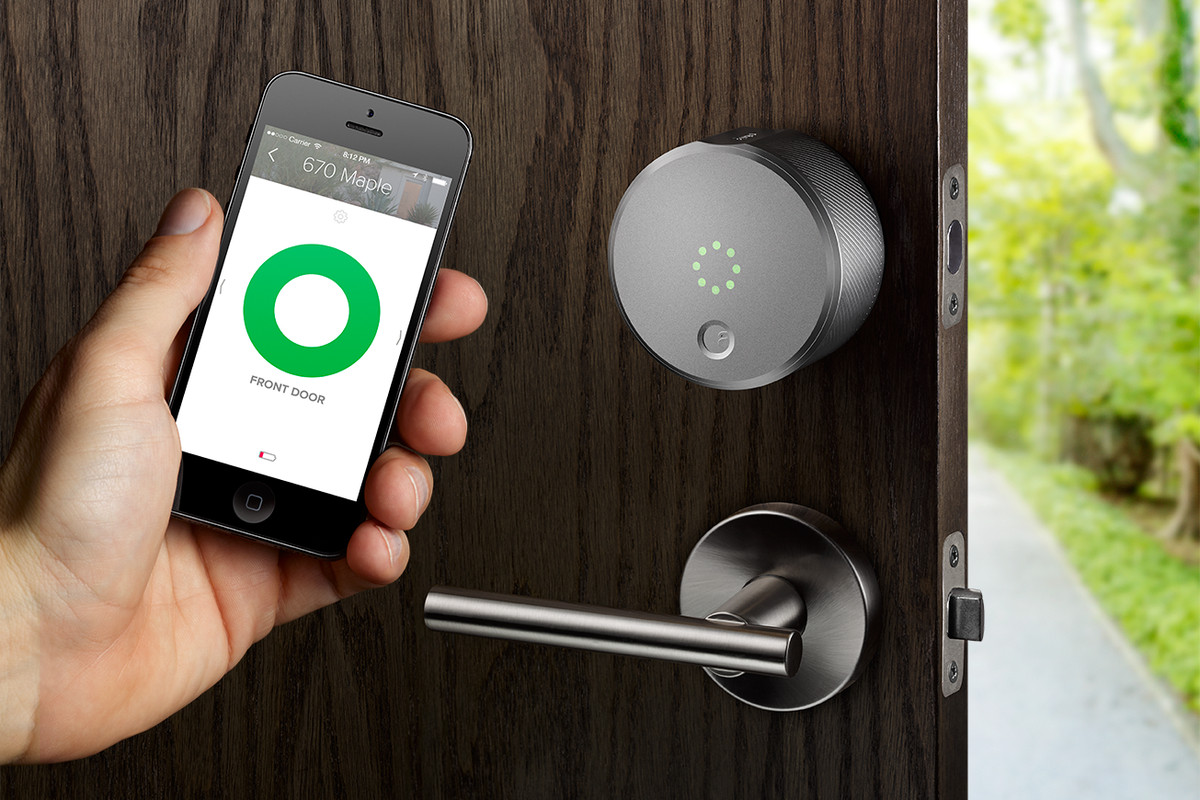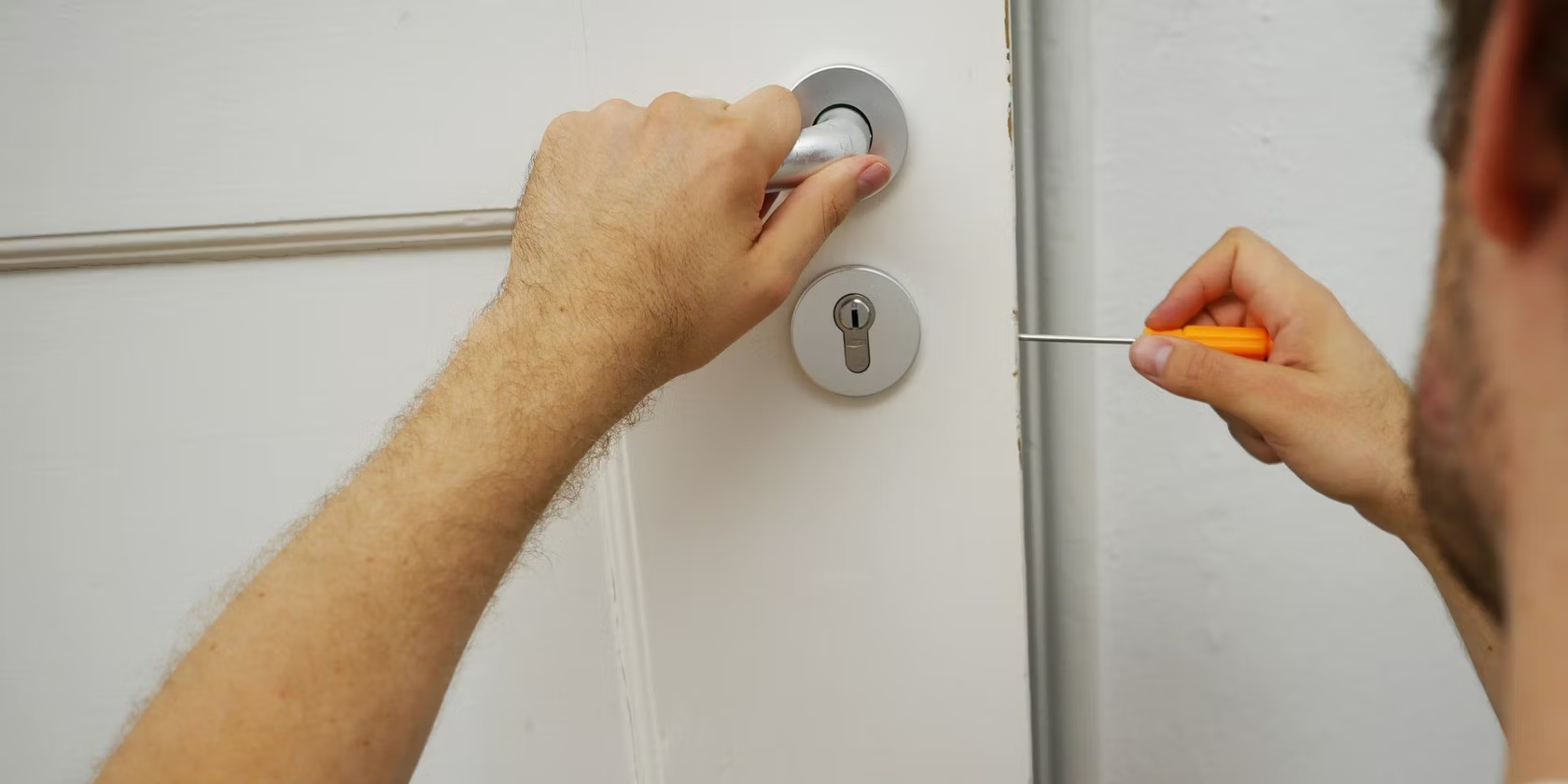Introduction
Welcome to our comprehensive guide on how to change the code on a smart lock. As technology continues to advance, so does our approach to home security. Gone are the days of fumbling with keys or worrying about losing them. Smart locks provide a convenient and secure way to access your home with just a few taps on your smartphone or the input of a unique code.
In this article, we will walk you through the process of changing the code on your smart lock. Whether you want to update the access code for a new tenant, change it periodically for added security, or simply reset the code due to a forgotten combination, we’ve got you covered.
Before we delve into the step-by-step instructions, let’s first gain an understanding of what smart locks are and the different types available on the market.
Note: The specific instructions may vary depending on the brand and model of your smart lock, so be sure to refer to the manufacturer’s manual for any additional guidance.
Understanding Smart Locks
Smart locks are innovative devices that offer a modern and convenient way to secure your home. Unlike traditional locks, which require a physical key, smart locks utilize advanced technology to grant access through various means, such as a keypad, smartphone app, or even voice commands.
One of the key features of smart locks is their ability to connect to your home’s Wi-Fi network, allowing you to control and monitor the lock remotely. This means that you can lock or unlock your door from anywhere using your smartphone or other connected devices.
Smart locks offer numerous advantages over traditional locks. For one, they eliminate the need for physical keys, reducing the risk of lost or stolen keys. Additionally, they provide a higher level of security by offering features such as temporary access codes, activity logs, and notifications.
Another great benefit of smart locks is their ease of installation. Most smart locks are designed to replace your existing deadbolt, making it a simple DIY project for most homeowners. For those who prefer professional installation, many manufacturers offer such services.
It’s important to note that not all smart locks are created equal, and there is a wide variety of options to choose from. Let’s take a look at some of the most common types of smart locks available on the market.
Types of Smart Locks
When it comes to smart locks, there are several types to consider, each with its own unique features and functionalities. Understanding the different types can help you make an informed decision when choosing the right smart lock for your home. Let’s explore some of the most common types:
- Keypad Smart Locks: These smart locks have a built-in keypad that allows you to enter a unique code to unlock the door. Some keypad smart locks also have physical keys as a backup option.
- Bluetooth Smart Locks: These locks rely on Bluetooth technology to connect to your smartphone or other Bluetooth-enabled devices. They offer the convenience of automatically unlocking the door when you approach it and locking it when you move away.
- Wi-Fi Enabled Smart Locks: These locks connect to your home’s Wi-Fi network, allowing you to control and monitor them remotely through a mobile app. Wi-Fi enabled locks often offer additional features such as activity logs and integration with other smart home devices.
- Biometric Smart Locks: These locks use advanced biometric technology, such as fingerprint recognition, to grant access. Biometric smart locks provide a high level of security and eliminate the need for keys or codes.
- Key Fob Smart Locks: These locks come with a key fob that you can carry with you. When you approach the door, the lock automatically detects the key fob and unlocks the door.
It’s important to consider your specific needs and requirements when choosing a smart lock. Factors such as convenience, security, and compatibility with your existing devices should all be taken into account.
Now that you have a better understanding of the types of smart locks available, let’s explore the benefits of changing the code on your smart lock.
Benefits of Changing the Code
Changing the code on your smart lock periodically offers several key benefits in terms of security and convenience. Let’s take a look at some of the main advantages:
- Enhanced Security: One of the primary benefits of changing the code on your smart lock is improved security. By regularly updating the access code, you reduce the risk of unauthorized access. This is particularly important if you have shared the code with others in the past or if you have recently moved into a new home.
- Control and Flexibility: Changing the code allows you to maintain control over who has access to your home. Whether it’s changing the code for a temporary guest or revoking access for a former occupant, you can easily manage and modify the entry codes as needed, providing you with greater flexibility and peace of mind.
- Eliminating Forgotten Codes: If you find yourself struggling to remember the current code, changing it can be a simple solution. By setting a new code that is easier for you to remember, you can avoid the frustration and inconvenience of being locked out of your own home.
- Preventing Code Exposure: Over time, codes can become vulnerable to being exposed or unintentionally shared. By changing the code on a regular basis, you reduce the risk of someone obtaining unauthorized access due to a compromised code.
- Adapting to Lifestyle Changes: Changing the code allows you to adapt to lifestyle changes and evolving security needs. For example, if you have a change in tenants or frequently have guests staying at your home, changing the codes ensures that only the intended individuals have access.
By taking advantage of the ability to change the code on your smart lock, you can maintain a secure and convenient entry system for your home. In the next section, we will walk you through the necessary steps to prepare for changing the code effectively.
Preparing to Change the Code
Before you dive into changing the code on your smart lock, it’s important to take a few preparatory steps to ensure a smooth and successful process. These steps will help you gather the necessary information and tools:
- Read the Manual: Start by reviewing the manufacturer’s manual or user guide for your specific smart lock model. Familiarize yourself with the instructions and any specific requirements or considerations that may be mentioned.
- Gather Important Information: Take note of any important information related to your smart lock, such as the current code, the master code (if applicable), and any backup physical keys that may have been provided. This information will come in handy during the code change process.
- Check the Battery Level: Ensure that the batteries in your smart lock have sufficient power. Some locks may prompt a low battery warning when it’s time to replace them. It’s essential to have enough battery power to complete the code change process without interruptions.
- Prepare a Backup Plan: It’s always a good idea to have a backup plan in case something goes wrong during the code change process. This could involve having spare physical keys, secondary access methods, or contacting the lock manufacturer’s customer support for assistance.
- Set Aside Time: Changing the code on your smart lock may take a few minutes, depending on the complexity of the lock and the process involved. Make sure to allocate enough time where you won’t be rushed or interrupted, ensuring a smooth and stress-free code change experience.
By taking these preparatory steps, you’ll be well-equipped and ready to change the code on your smart lock effectively. In the next section, we will provide you with a step-by-step guide to changing the code, tailored to different types of smart locks.
Step-by-Step Guide to Changing the Code
Now that you’ve prepared, it’s time to walk through the step-by-step process of changing the code on your smart lock. The specific instructions may vary depending on the brand and model of your smart lock, so be sure to refer to the manufacturer’s manual for any additional guidance. Here is a general guide that can apply to most types of smart locks:
- Access the Admin Menu: Depending on the model, you may need to access the admin menu or settings on your smart lock. This is usually done by using a specific combination on the keypad or through the mobile app.
- Enter the Current Code: Once you are in the admin menu, you will usually be prompted to enter the current code to verify your access. Follow the instructions provided to enter the code correctly.
- Select the Code Change Option: Within the admin menu, you should find an option to change the code. Select this option to proceed to the next step.
- Enter the New Code: Now, you will be prompted to enter the new code. Depending on the model, you may need to enter it twice to confirm it accurately. Follow the instructions on the screen or the voice prompts to enter the new code.
- Save the New Code: After entering the new code, you will typically need to save or confirm the changes. Again, follow the provided instructions to ensure that the new code is properly saved.
- Test the New Code: Once the code change is complete, it’s essential to test the new code to ensure it functions correctly. Lock and unlock the smart lock using the newly set code to verify that it is working as intended.
- Update Other Devices (If Applicable): If your smart lock is connected to a smartphone app or other devices, make sure to update them with the new code. This will ensure that all access points are synchronized and functioning correctly.
Remember, it’s crucial to refer to the manufacturer’s specific instructions for your smart lock model, as the steps may vary. Additionally, make sure to follow any security best practices recommended by the manufacturer, such as changing the master code or enabling additional security features.
In the next section, we will discuss how to test the new code and troubleshoot any common issues that may arise during the process.
Testing the New Code
After successfully changing the code on your smart lock, it’s important to test the new code to ensure that it is working properly. Testing the new code will give you the confidence that your lock is secure and functioning as expected. Here are some steps to follow when testing the new code:
- Lock the Door: Ensure that the door is closed and locked before testing the new code. This will simulate a real-world scenario and allow you to verify the effectiveness of the new code in securing your home.
- Enter the New Code: Input the newly set code into the smart lock’s keypad or app, depending on the method you used to change it. Follow the instructions provided to enter the code accurately.
- Confirm Successful Unlocking: Test the new code by unlocking the door using the keypad or app. You should hear or see signals confirming that the code was accepted, such as a beep, indicator light, or notification on your smartphone.
- Attempt Unauthorized Access: As an extra measure, try entering a different code or an incorrect combination to ensure that unauthorized entry attempts are properly denied. The lock should not grant access and should display an error message or emit a warning signal.
- Repeat Testing: Repeat the testing process multiple times to ensure consistency and to verify that the new code works reliably in various situations.
If any issues or inconsistencies are encountered during the testing process, refer to the manufacturer’s manual for troubleshooting guidance. It’s also helpful to ensure that the batteries in your smart lock are not low or depleted, as this can affect the lock’s performance.
By thoroughly testing the new code, you can have peace of mind that your smart lock is functioning correctly and providing the desired level of security for your home. In the next section, we will discuss common issues that may arise during the code change process and how to troubleshoot them.
Troubleshooting Common Issues
While changing the code on a smart lock is typically a straightforward process, it’s not uncommon to encounter some common issues. Here are a few troubleshooting tips for addressing potential problems that may arise:
- Incorrect Code Entry: If you’re having trouble entering the new code, ensure that you are inputting it correctly. Pay close attention to any specific instructions or limitations provided by the manufacturer, such as the required number of digits or the need for specific keypad sequences.
- Low Battery Warning: If your smart lock has a low battery, it may affect its performance, including the ability to change the code. Replace the batteries promptly and try the code change process again.
- Resetting the Lock: In some cases, you may encounter difficulties with changing the code due to a lock malfunction or a forgotten administrator code. Consult the manufacturer’s instructions on how to reset the lock to its factory settings. This will erase all codes and settings, allowing you to start fresh.
- Syncing Issues: If your smart lock is connected to a smartphone app or other devices, ensure that they are properly synced. This can involve reinstalling the app or troubleshooting the connection between the lock and the devices.
- Contacting Customer Support: If you have followed all the troubleshooting steps and are still experiencing issues, don’t hesitate to reach out to the lock manufacturer’s customer support. They can provide additional guidance and assistance tailored to your specific lock model.
Remember, it’s crucial to refer to the manufacturer’s manual or user guide for your specific smart lock for detailed troubleshooting instructions. They will provide the most accurate and relevant information for addressing any issues that may arise during the code change process.
Now that you’re familiar with troubleshooting common issues, let’s explore some additional tips and considerations to keep in mind when changing the code on your smart lock.
Additional Tips and Considerations
When changing the code on your smart lock, there are a few additional tips and considerations that can further enhance the security and functionality of your lock. Keep the following points in mind:
- Create Unique and Strong Codes: When setting a new code, avoid using easily guessable combinations like birth dates or consecutive numbers. Opt for a unique and strong code that is difficult for others to figure out. Include a mix of numbers, letters, and symbols if possible.
- Securely Store and Manage Codes: Keep a record of the access codes you set for your smart lock in a secure location. Be cautious about sharing codes and change them if you suspect any unauthorized access.
- Regularly Update Codes: Changing the code periodically adds an extra layer of security. Consider updating the code every few months to maintain optimal security for your home.
- Disable Default Codes: If your smart lock comes with default codes, be sure to disable them and set your own unique codes. Default codes are often widely known and can compromise the security of your lock.
- Enable Automatic Locking: Some smart locks offer the option to automatically lock the door after a set period of time. Enabling this feature ensures that your door is always locked, even if you forget.
- Regularly Maintain Your Smart Lock: Keep your smart lock in good working condition by cleaning it regularly and replacing batteries as needed. Routine maintenance will ensure optimal performance and reliability.
By following these tips and considering these additional factors, you can maximize the security and convenience provided by your smart lock. Always refer to the manufacturer’s manual or user guide for specific guidelines and recommendations pertaining to your lock model.
Before we wrap up, let’s briefly summarize the main points covered in this guide on how to change the code on a smart lock.
Conclusion
Changing the code on your smart lock is a simple yet effective way to enhance the security and convenience of your home. By following the steps outlined in this guide, you can easily update the access code for your smart lock, ensuring that only authorized individuals have entry.
We started by understanding what smart locks are and the various types available on the market. We then explored the benefits of changing the code, such as improved security, control, and flexibility. Preparing for the code change process, gathering necessary information, and ensuring sufficient battery power were crucial steps.
Next, we provided a step-by-step guide to changing the code, tailored to different types of smart locks. Testing the new code and troubleshooting common issues were also covered, ensuring a smooth and successful code change process.
Additional tips and considerations, such as creating strong codes, securely managing codes, and regular maintenance, were shared to further enhance the security and functionality of your smart lock.
Remember to always refer to the manufacturer’s manual or user guide for specific instructions and recommendations pertaining to your smart lock model.
By taking the time to change the code on your smart lock, you’re taking an important step towards ensuring the safety and security of your home. Enjoy the convenience and peace of mind that comes with having control over who has access to your living space.







